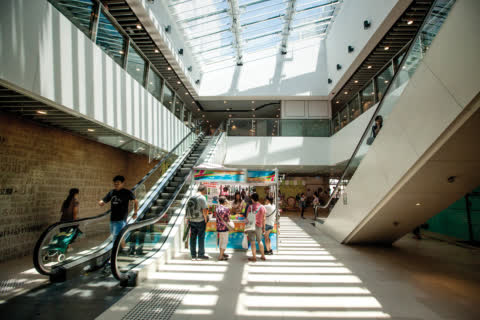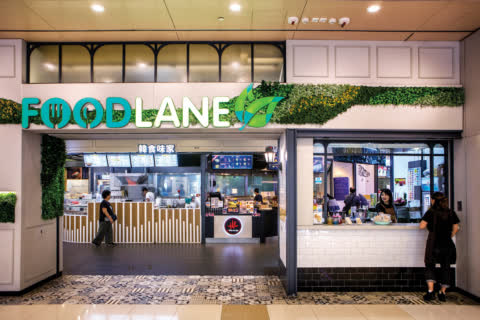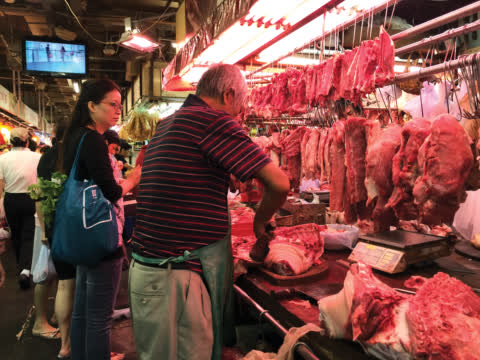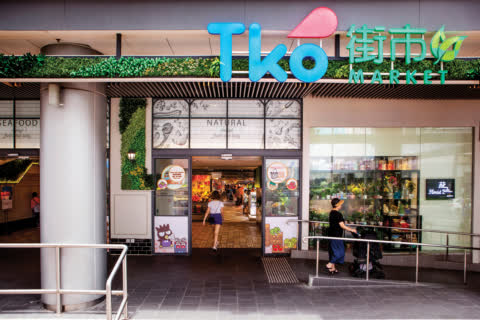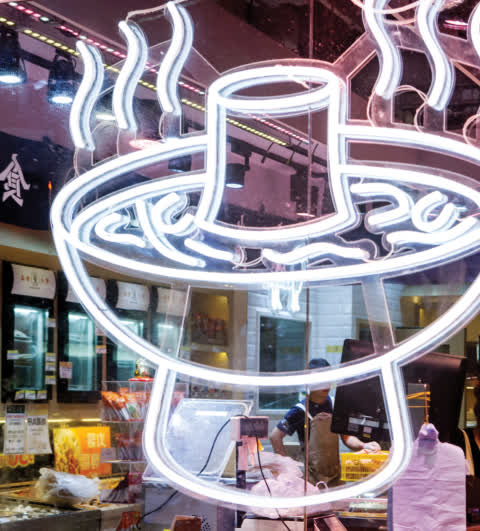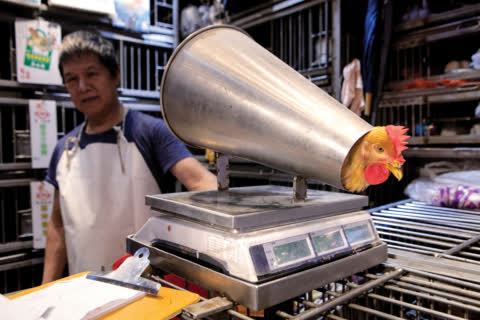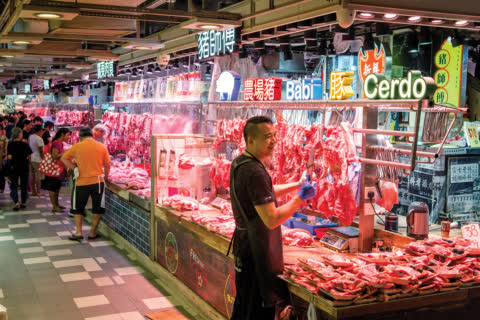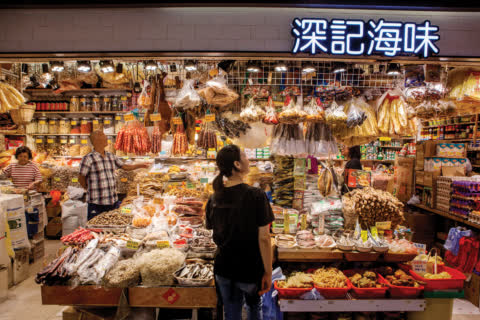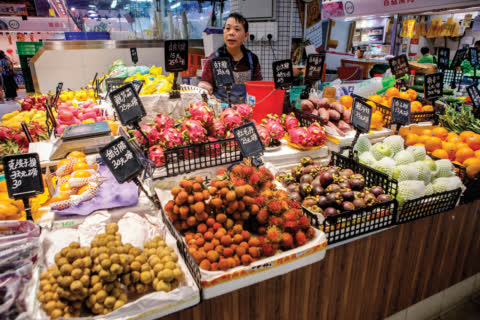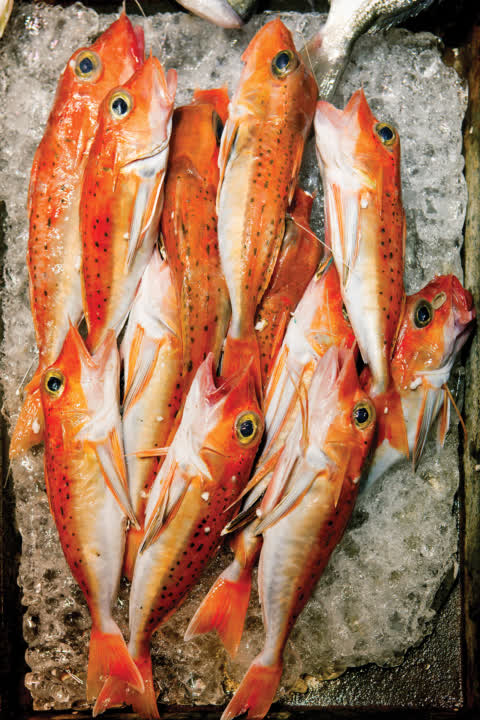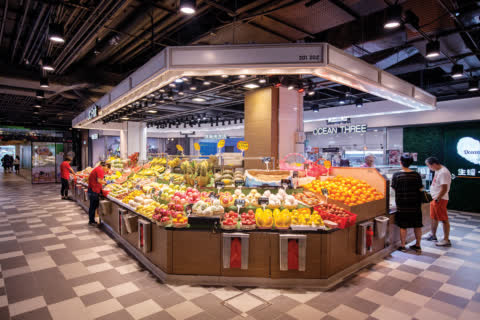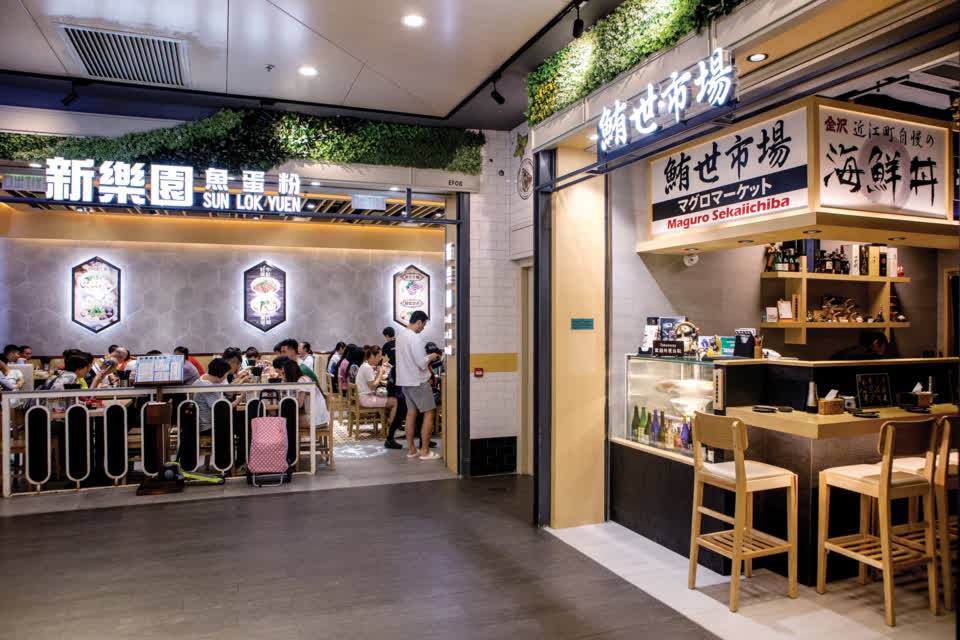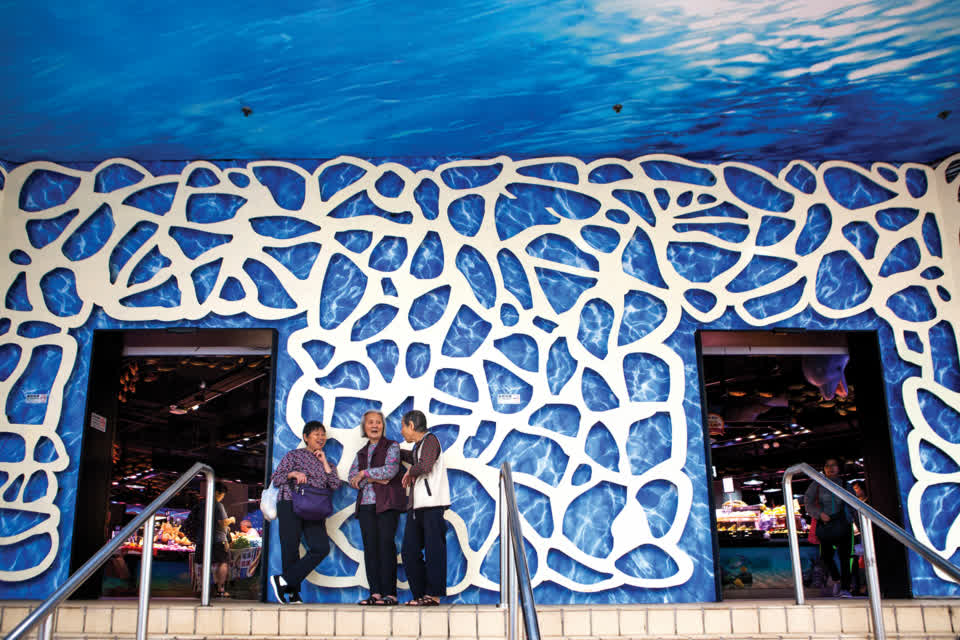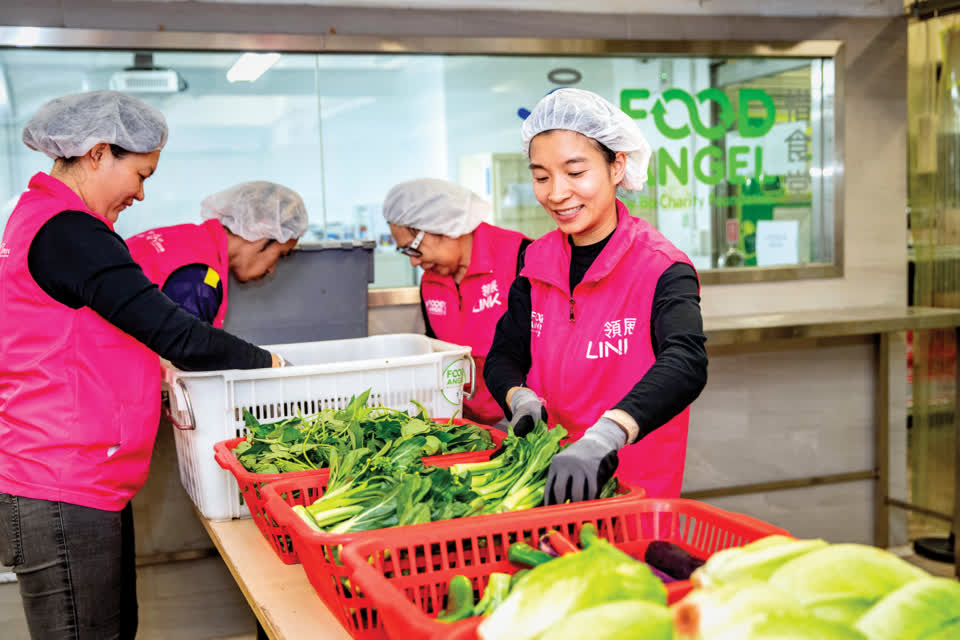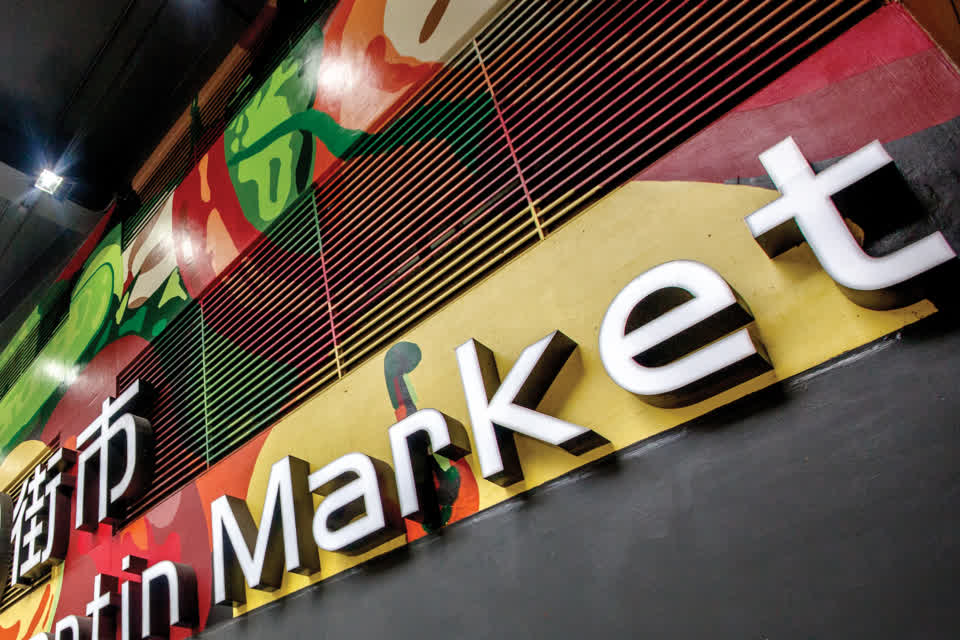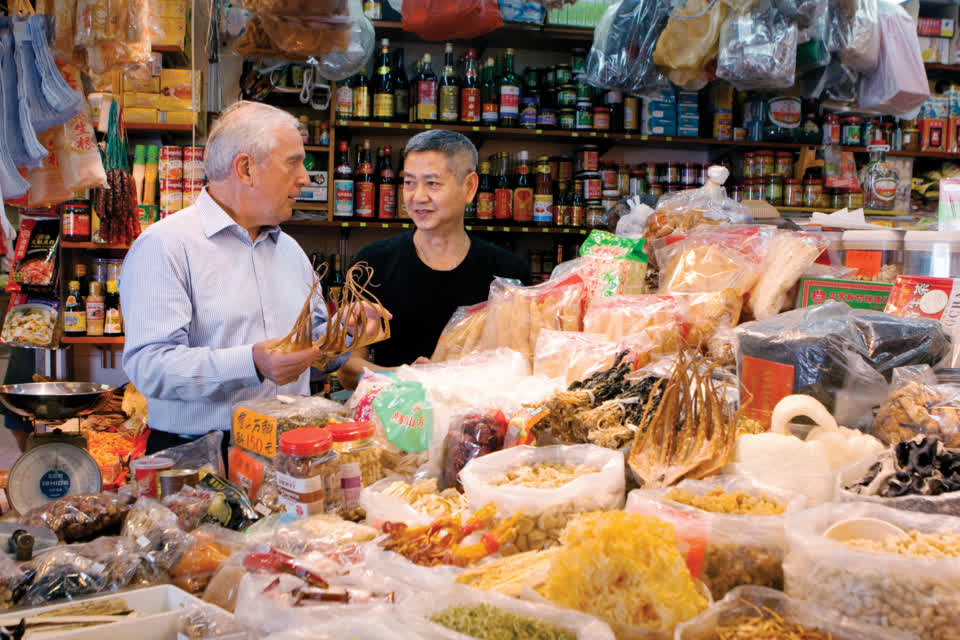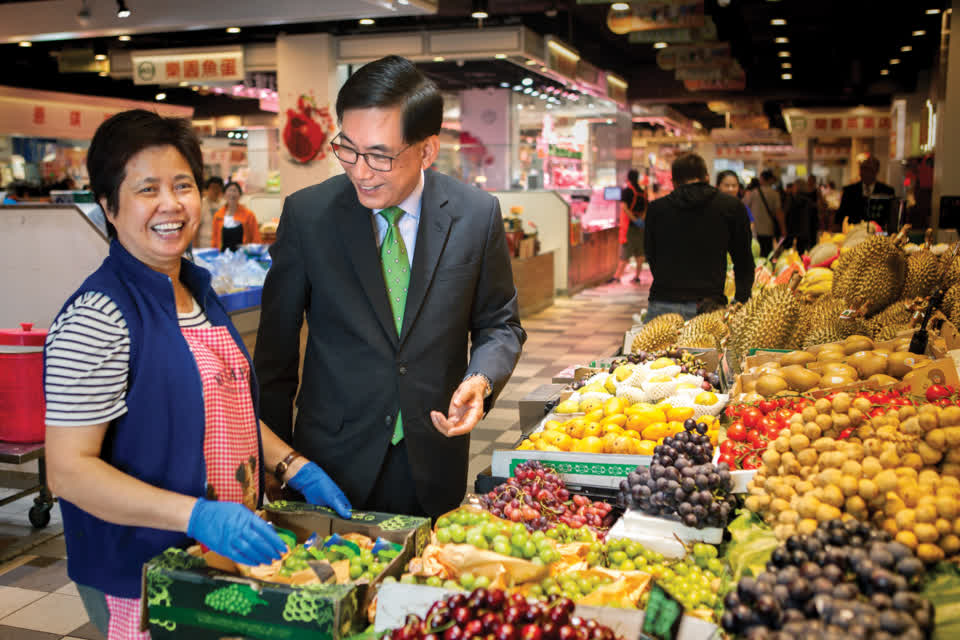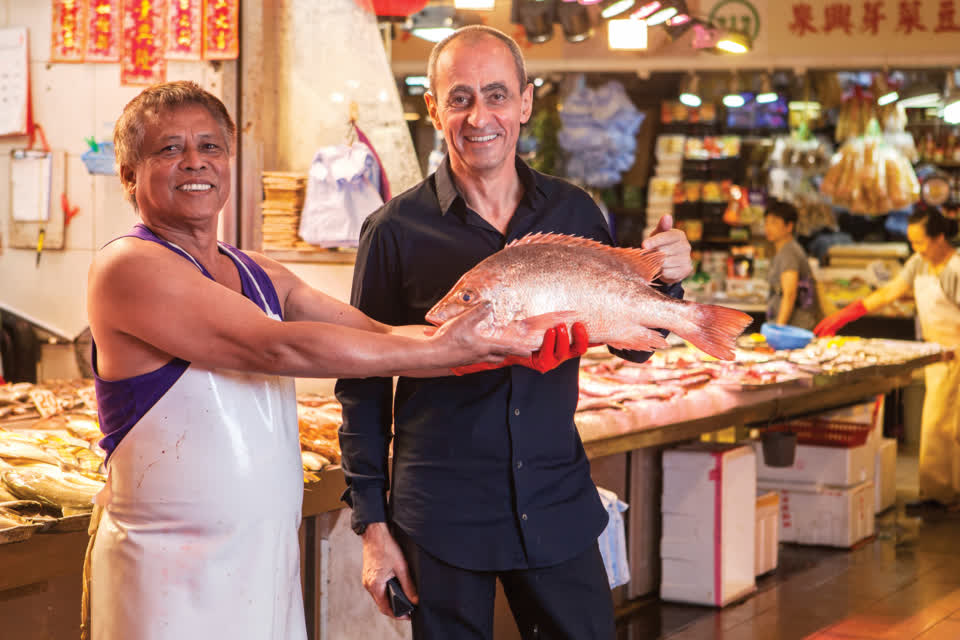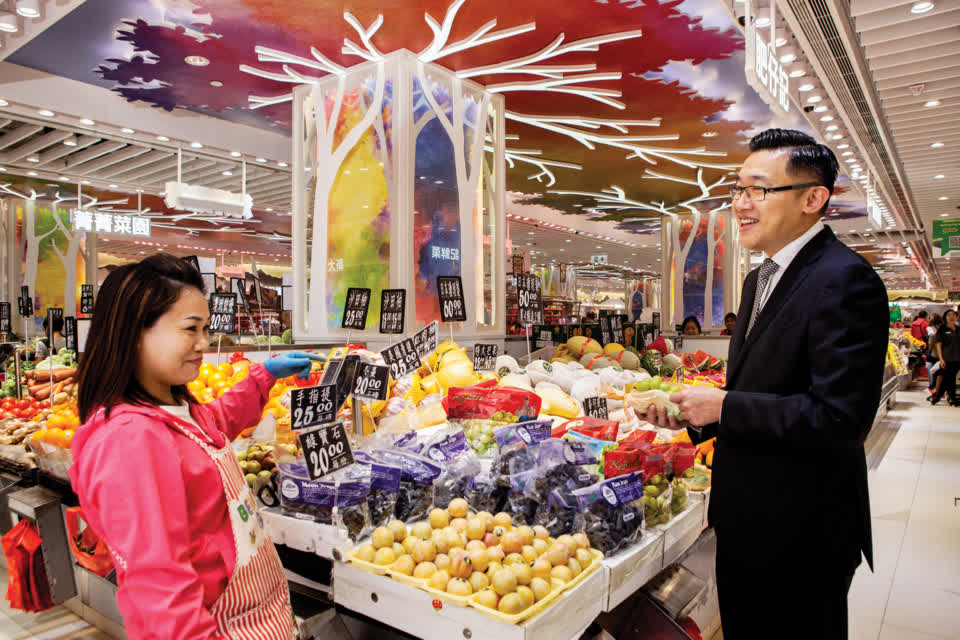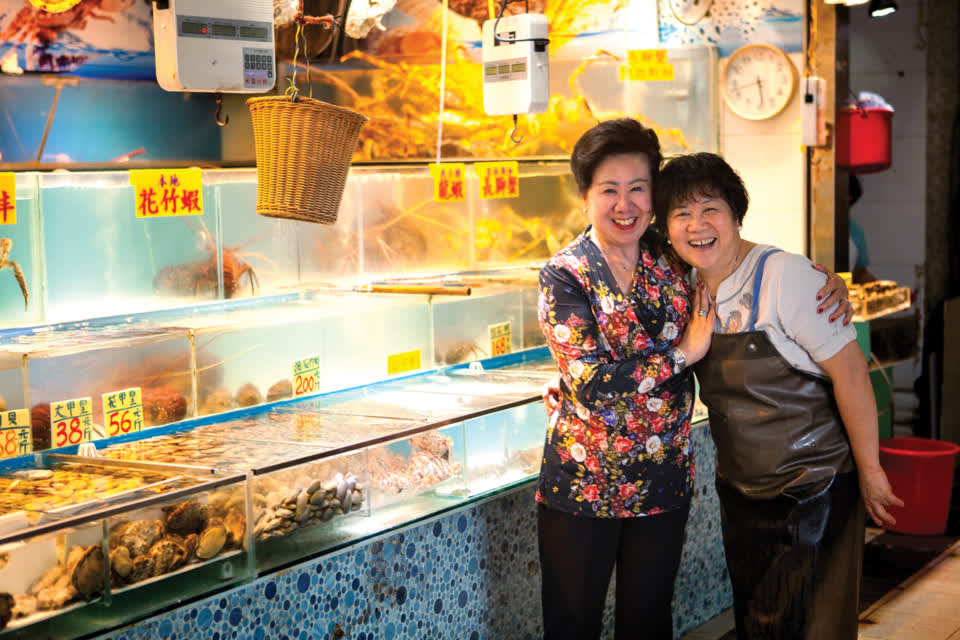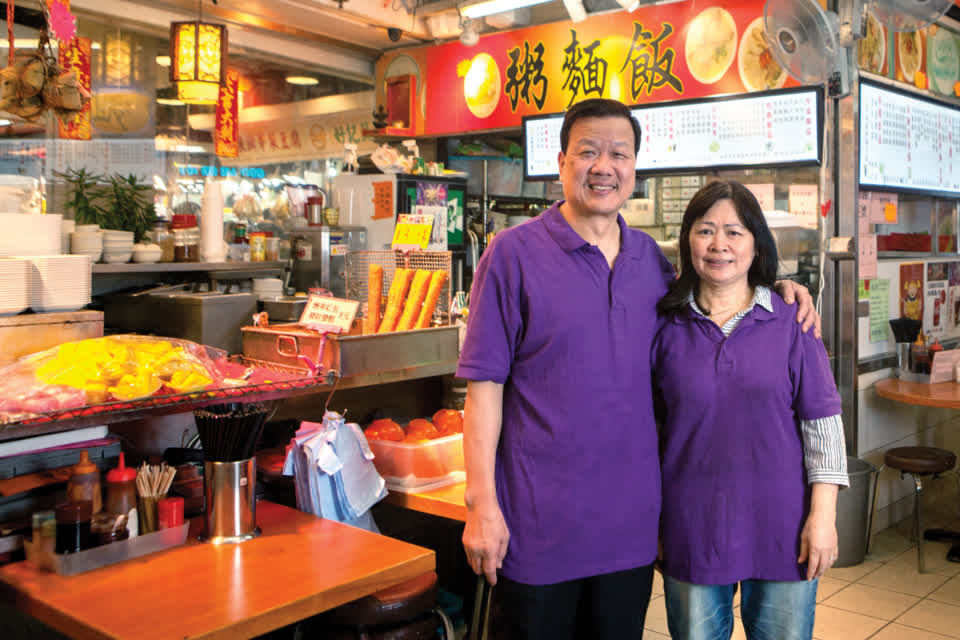“This wasn’t only about improving the markets, it was about right-sizing the markets”
Another key priority in the redesign was right-sizing the markets, according to Sallnow-Smith.
“There were occasions where the markets were either too big or there were too many of them for local demand,” he says. “There may have been a road separating two districts and the Housing Authority had built a mall on each side of the road. The way the Housing Authority ran this before, they would put a wet market in both of those malls, because they were in different districts with different administrative district councillors, but this meant that the two added together were just too big. So on one occasion we closed one and moved the tenants to the other. They were probably both half empty beforehand. So we concentrated the tenants in one place. This was actually better for the tenants’ business than it was before. This wasn’t only about improving the markets. It was about right-sizing the markets.”
A TALE OF TWO MARKETS: SHEUNG TAK AND TKO MARKET
Fresh markets represent only about 15 per cent of Link’s revenues, but they have a far greater impact on footfall for the wider area than these numbers would suggest.
“One of the good examples is TKO Market, where we have recently renovated the fresh market and we have put in cooked food stalls,” says Allen. “That has transformed the traction for people coming in, and that spreads out to all the other tenants that we have operating in the mall. So a good market can transform a property. If you compare a mall that doesn’t have a fresh market to one that does, there is a clear benefit to having a fresh market in place.”
To get a true idea of what a fresh market can be – and equally, what it should not be – there can be nothing better than walking through real-life working markets with the man tasked with redesigning them. We visited two very different markets in Tseung Kwan O with Keith Griffiths, the architect.
The first was Sheung Tak. It’s a busy place but it’s hard to move around.
“This is one of the older models, built about 20 years ago,” he says. “If you look down this aisle you can see that the walls are blocking all visibility through the market. The meat is located next to the dry goods, and you can’t even see the groceries. Everything is blockaded. So the whole idea of creating a vibrant community in the market falls away, because people only come here to shop. It’s just a practical place.
“Markets should be places where people come together to meet, not just to shop. It’s all about being the centre of a community. Successful markets are filled with people having tea, chatting, catching up on the news, as well as shopping. But here it’s only about shopping. Those walls dividing the stalls completely prohibit any sightlines. You can’t see the fruit and vegetables from here, you can’t see your friends. You don’t know what’s going on. There’s no cooked food stall, there’s nowhere to stop, sit down and have a chat.”
We push our way through to the busiest point in the market, right in the centre of the grid-like network of aisles.
“This is a really important junction in this market,”
Griffiths says. “We’ve got dry goods, frozen foods and fruit. This junction is so important as a gathering place, a crossroads. But look at the wet floor, the mess, how narrow the aisle is. It’s not the sort of environment you really want to be buying your food at, and it’s definitely not the environment you want to be spending time in.
“When I first came to one of the Link markets, the first thing I thought was: how can we improve visibility? These walls: take them down so you can look out over the produce and across the entire market. And then put similar produce together, bring the vegetables together, put the meat and the fish against the walls to create less disturbance. Introduce some cooked food, somewhere serving tea, a space where people can meet and gather and have a good time, not just buy product.”
“From the moment we come in, we have a completely clear sightline over the entire market”
It’s not far from Sheung Tak to the recently renovated TKO Market, and that’s where we go next. The difference is striking and immediate. This market is bright and open. It seems to do everything differently.
“In this market we’ve had all the concrete walls removed,” Griffiths explains as we walk through, and here we don’t have to turn sideways to move past other shoppers. “The only obstruction to sightlines is the columns. So from the moment we come in through the main entrance, we have a completely clear sightline over the entire market, right over all the fruits and vegetables, over the dry goods, all the way down to the meat and the fish. It’s a completely clear view. From the first row of stalls here, we’re looking over five more rows of stalls. From having our view restricted to just the stall in front of us at Sheung Tak, we now have a viewline which is at least 50 metres in all directions, so we can see everybody who is shopping.
“This man here, he can see somebody standing over there. Maybe he’s a friend 60 metres away. And also we have cooked food put against the side walls, and any stall that needs high fridges or back walls is put against the side walls. So you’ve got these wonderful displays of spices and condiments and sauce bottles all against the side walls.”
Each neighbourhood market has its own character and specialities, and there is a huge amount of meat and fish on sale in TKO Market. We walk over to the far side of the market, where the fish stalls are grouped together.
“It’s more challenging in the fish and meat areas because they are naturally more messy,” Griffiths says. “After this market was reopened, after it had the makeover, the clutter at counter level is gone. And that’s where management and maintenance come in, ensuring for the good of the entire market that we can prevent that clutter and keep everything clean.”
Any partitions in this redesigned market are made of glass, not tile or brick, and they are in place just for hygiene purposes. Occasionally, for instance, a vegetable stall will back onto a meat stall, and a glass screen stops any contamination from the meat into the fruit or vegetables. These glass screens are kept spotlessly clean to allow a view right through the market to the far wall.
Merchandising things together helps shoppers find the best deals.
“First of all, when you come in, you’ve got to have fruit, you’ve got to have vegetables,” Griffiths says. “So here in TKO Market we have four fruit stalls and they’re all obviously competing against each other for quality and price, but they’re all put together, they’re not distributed all over the market. In the old market they were all over the place. Here they’re collected together.
“Look at the stall. It’s simple and clean, with none of the clutter of the old market. The front shelf pulls out, and all the fresh produce is out on that shelf. And then at the back, there’s a simple rail to hang fruit from, so that can be seen from across the market.”
Lighting is directed at the produce, picking out its vivid colours. We walk through to the vegetable area, and once again the stalls are all grouped together, so the prices and freshest products are more easily compared.
“There’s a lot of comparison shopping going on in this market, whereas in the old market you would just go the way you knew. You might have had a relationship with the meat seller or whoever, but that doesn’t promote a sense of community, and it doesn’t promote a sense of fairness in the trading. In the old market, everything was concealed, and that’s not a good idea.
“Look at the signage. We have the same style of signboard over every stall, which is personalised for each trader. We’ve removed the cluttered signage we had in the old market, and now we have very clear signage.”
“The shoppers are drifting through, chatting with people as they go, and enjoying the shopping experience”
There are noticeably fewer aisles in TKO Market, but they are at least three metres wide compared to two metres or less in the older market. The typical size of the market stalls in the renovated market is larger too. This means that the overall efficiency is the same, because there are bigger stalls, and fewer but wider aisles, and it means people can more easily browse-shop.
“Here the shoppers are not goal-oriented, crashing their way through a crowded market to the one stall they know. They’re actually drifting through as you would in a mall, chatting with people as they go, and they’re enjoying the shopping experience.
“In the newer markets we are now injecting even more of a sense of community by putting cooked food stalls, and places for people to sit, right in the heart of the market, where they can sit to have a cup of tea and have a snack, engage with other people, before they go on to do other things.”
We stop at one of the seafood stalls, where staff are busy hooking out fish from the open tanks, arranging fillets on counter-level shelves and weighing orders for customers. Looking up, you can see that there are three different types of lighting which combine to illuminate the variety of seafood on display. Griffiths is beaming at the effect that the renovations have had.
“This stall has no back wall,”
he points out. “You can see through to the next fish stall, and then to the chickens behind that. We have stainless steel trays, a ceramic floor, and everything is kept clean, bright, neat and tidy. What a difference!”

